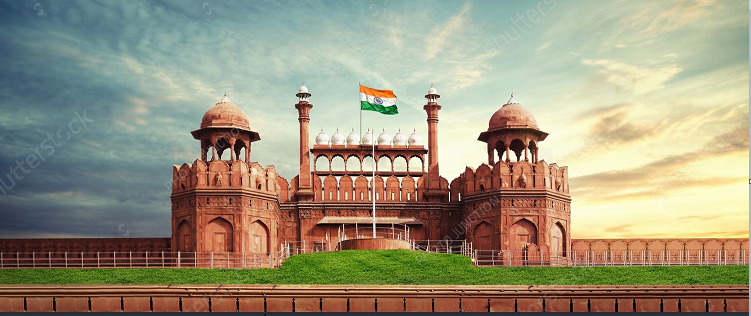
The Red Fort, also known as Lal Qila, stands as a magnificent symbol of India's rich history and architectural prowess. Located in the heart of Old Delhi, this UNESCO World Heritage Site is a testament to the grandeur of the Mughal era. The fort's imposing red sandstone walls have witnessed centuries of history, making it an iconic landmark in the nation's capital.
Commissioned by the fifth Mughal Emperor Shah Jahan, the Red Fort was constructed between 1638 and 1648. The fort served as the main residence of the Mughal emperors for nearly 200 years until the British colonial era. Its name originates from the vibrant red sandstone used in its construction, giving it a distinctive appearance that captivates visitors from around the world.
Architectural Marvel
The Red Fort boasts a harmonious blend of Persian, Timurid, and Indian architectural styles. The complex covers a vast area, featuring impressive gates, pavilions, and lush gardens. The Lahori Gate, facing the city, is a prominent entry point leading to the Chhatta Chowk, a covered bazaar that was once bustling with merchants and artisans.
The Diwan-i-Aam (Hall of Public Audience) and the Diwan-i-Khas (Hall of Private Audience) showcase intricate marble inlays, delicate carvings, and elegant archways. The Moti Masjid, a pearl-white mosque within the fort, adds to its spiritual aura. The Nahr-i-Behisht, or Stream of Paradise, flows through the complex, enhancing its beauty.
Historical Significance
The Red Fort has played a pivotal role in India's history. It was the site where India's first Prime Minister, Jawaharlal Nehru, hoisted the national flag on August 15, 1947, marking the country's independence from British rule. The fort's rich history also includes being a center of political and cultural activities during the Mughal reign.
Walking through the halls of the Red Fort is like stepping back in time, as each corner echoes the stories of emperors, battles, and cultural exchanges. The fort has witnessed the rise and fall of empires, making it a living testament to the resilience and dynamism of India's historical narrative.
Visitor Experience
Today, the Red Fort continues to attract millions of visitors annually who marvel at its architectural splendor and soak in its historical significance. The annual Independence Day celebrations at the fort draw crowds from all over the country, creating a vibrant atmosphere of patriotism and cultural pride.
Exploring the Red Fort allows visitors to delve into India's past, appreciating the intricate details of Mughal architecture and imagining the grandeur of the imperial court. The sound and light shows conducted in the evenings narrate the fort's history, adding a touch of drama to the overall experience.
Gallery
















